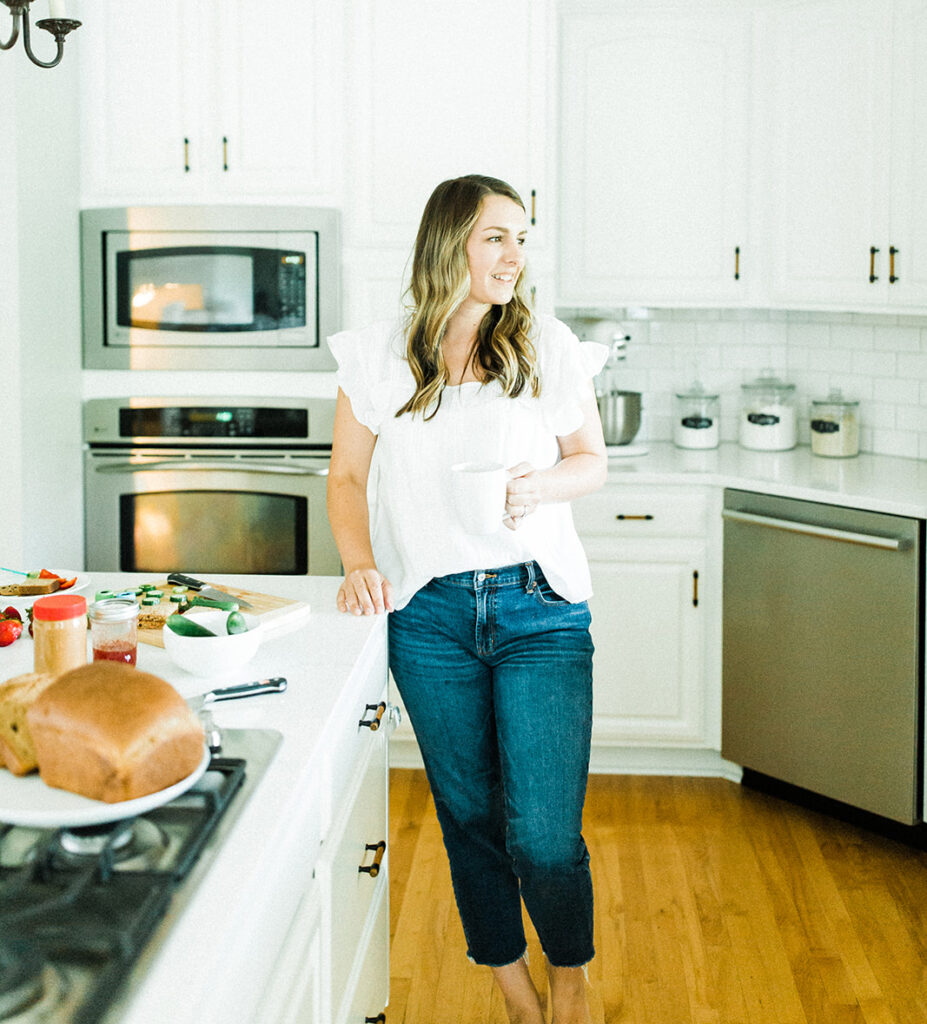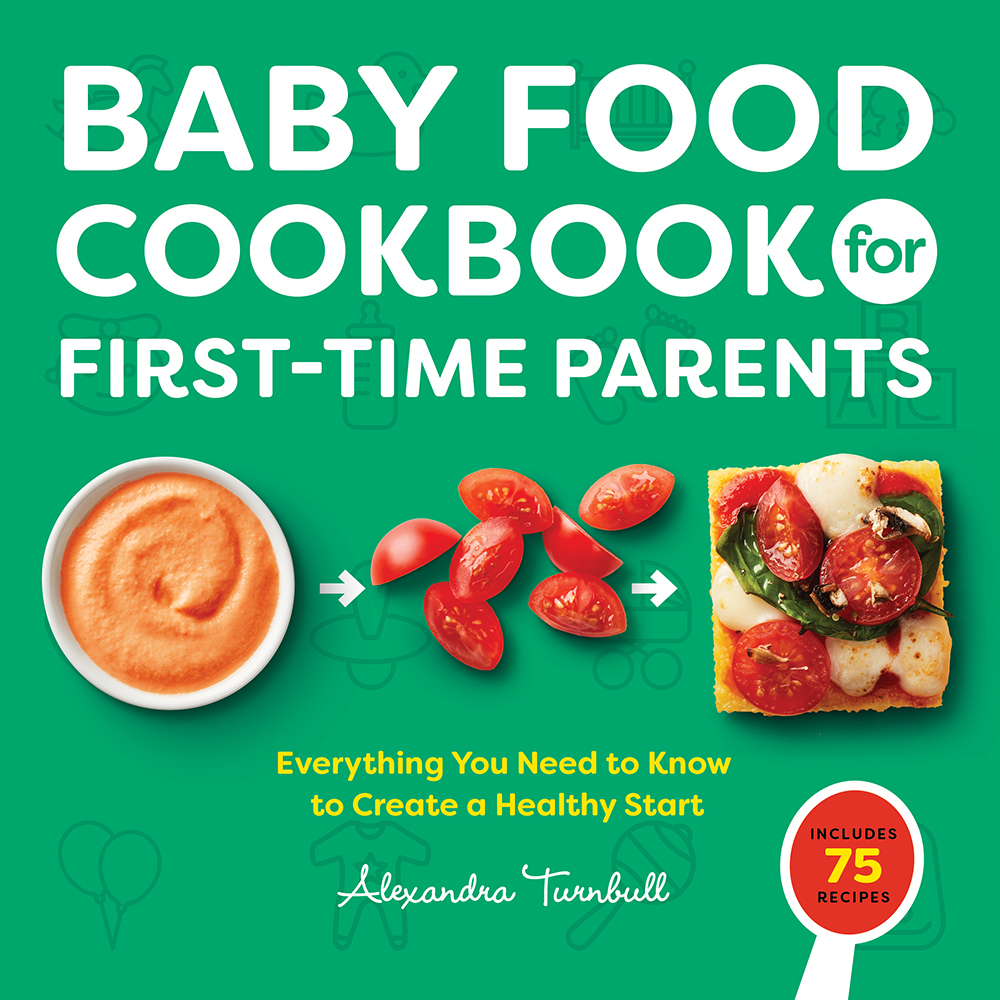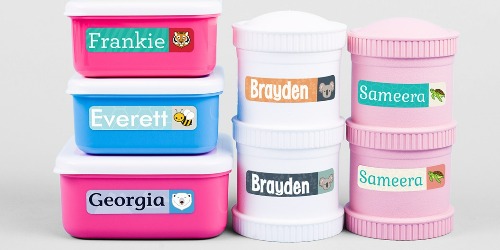This article is sponsored by Opal Apples and may contain affiliate links.
Children are far more likely to eat fruit when it’s sliced, especially apples.
So just slice their apples and they’ll be eating apple slices for days – score for eating more fruit!
But when you go to empty their lunch box at the end of the day you find the bag of nicely sliced apples untouched in their lunch box and brown as can be.
Brown apples can be unappetizing for many, let alone a picky eater.
Here are 10 different ways to keep apples from browning to help you keep your sliced apples fresh, tasty, and out of the trash, including one apple that is naturally non-browning.
Table of Contents
Why do Apples Brown
The answer is simple – oxidation. When an apple is cut, the flesh is exposed to air, which then begins to oxidize and turn brown, also known as enzymatic browning.
The reason why apples are so prone to oxidation over other fruits is because they contain more of the enzyme polyphenol oxidase.
Are Browning Apples Okay to Eat?
Yes, browning apples are perfectly safe to eat. However the enzymatic browning that occurs when apples are exposed to oxygen can alter the flavor, smell, texture, and most obviously the appearance, making it not as desirable to eat considering we eat with our eyes first.
10 Ways to Keep Apples from Browning
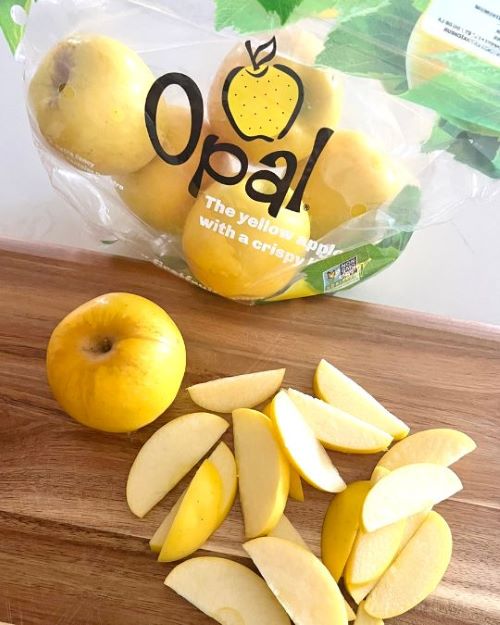
In order to prevent apples from browning, you have to somehow prevent the oxidation process from starting in the first place, or at least slow it down.
There are several ways you can delay or prevent enzymatic browning and these include:
- Reversing the oxidation process
- Changing the pH
- Exposure to low or high heat – cooking or freezing
Here are 10 common ways to minimize or keep apples from browning. All pictures were taken four hours after apples were sliced. I used Macintosh apples to test out the different solutions compared to the naturally non-browning Opal apples.
1. Whole Apples
This one is a no-brainer, but I had to include it as an option.
If your child enjoys whole apples, this is one of your best bets, but again, children eat more fruit when it’s sliced and whole apples can be a bit challenging for kids to eat, especially if they have braces or loose teeth.
Sliced apples may also help reduce food waste because once you bite into a whole apple, the entire apple is now contaminated versus simply eating a few slices and saving the rest for later.
2. Naturally Non Browning Opal Apples
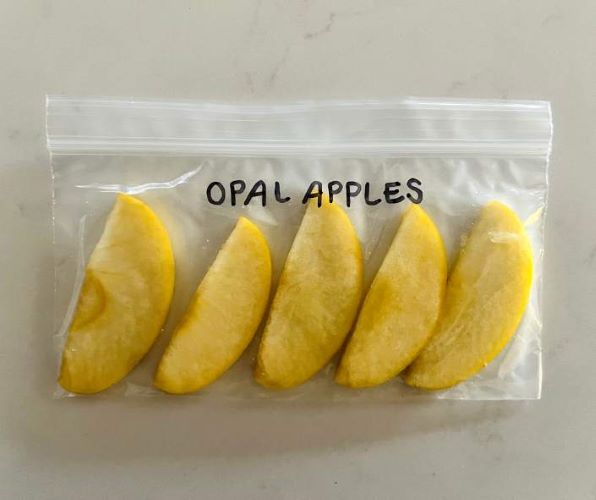
When I came across Opal apples, not only was I pleasantly surprised by the crunchy texture and sweet taste, but they’re naturally non-browning too! This is due to the low level of polyphenol oxidase found in Opal apples.
Some may think Opal apples were genetically engineered to be non-browning, but they’re not!
Because Opal apples are naturally non-browning, they’re the perfect option if you’re trying keep apples from browning without any additional steps.
In the meantime while you put Opal apples on your grocery list, you can try a variety of solutions to help ward off the unpleasant browning of other apples.
3. Soak in Water

Soaking apple slices in water prevents oxygen from coming in contact with the flesh of the apple, but only temporarily. Once your apples are out of water, they start to brown and sending your child to school with apples in water might make for a big mess.
Ingredients: Water – enough to cover apple slices
Soak time: 3 minutes
Results: minimal difference compared to plain apple slices
4. Soak in Lemon Juice Water
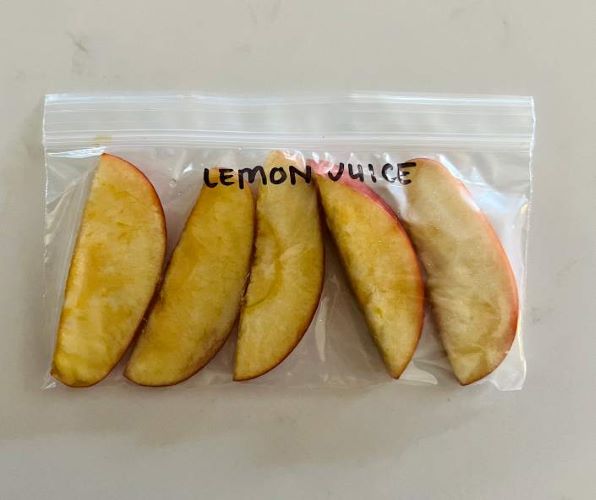
Lemons, like many citrus fruits, naturally contain citric acid which helps prevent the oxidation process (aka enzymatic browning) by lowering the overall pH.
Lemons or lemon juice may be something you already have in your fridge, making this an easy and cost effective way to keep apples from turning brown. The only downside is there’s a slight lemony after taste and after a while, they still turn brown.
Ingredients: 1 Tbsp lemon juice + 1 cup water
Soak time: 3 minutes
Results: apple slices still turned just as brown as plain apple slices after 1-2 hours.
5. Soak in Lemon-Lime Soda
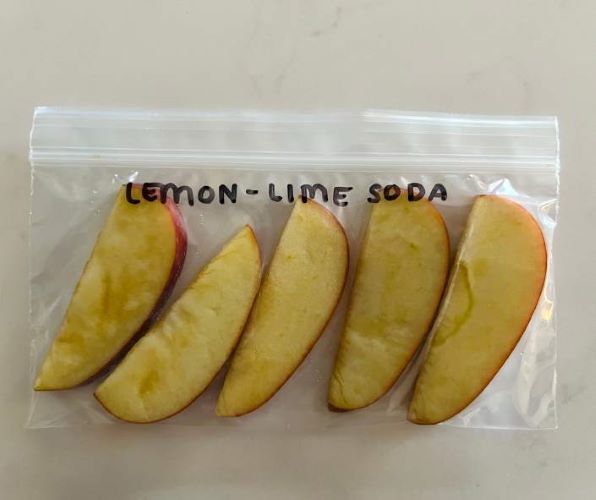
Lemon-lime soda also contains citric acid which helps add to the refreshing lemon-lime sour taste of the soda.
While this method does seem to work fairly well, and better than lemon juice with water, I don’t find it practical to waste half a can of soda when there are other effective ways to keep apples from browning, such as using Opal apples.
Ingredients: 1 cup lemon lime soda (Sprite) – enough to cover apple slices
Soak time: 3 minutes
Results: less browning than plain apples
6. Soak in Salt Water
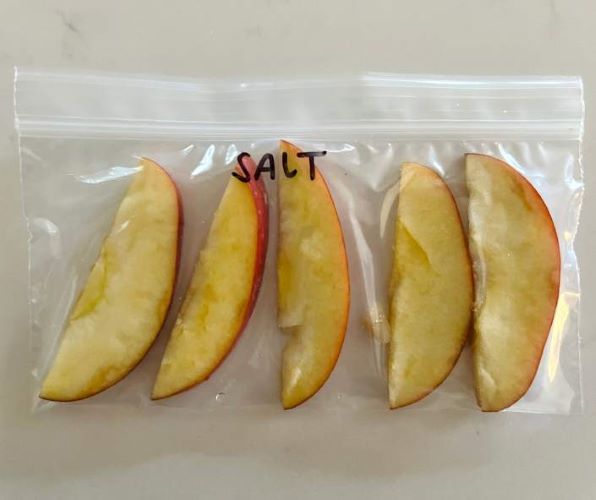
Next to using whole apples or Opal apples, I found salt water to be the next best solution to keep apples from browning.
The salt helps pull water away from the apple, minimizing the ability for oxidation to occur.
This is an extremely easy option to keep apples from browning considering salt is found in nearly every kitchen.
Ingredients: ½ tsp kosher salt + 1 cup water
Soak time: 3 minutes
Results: least amount of browning, other than Opal apples
7. Soak in Diluted Apple Juice
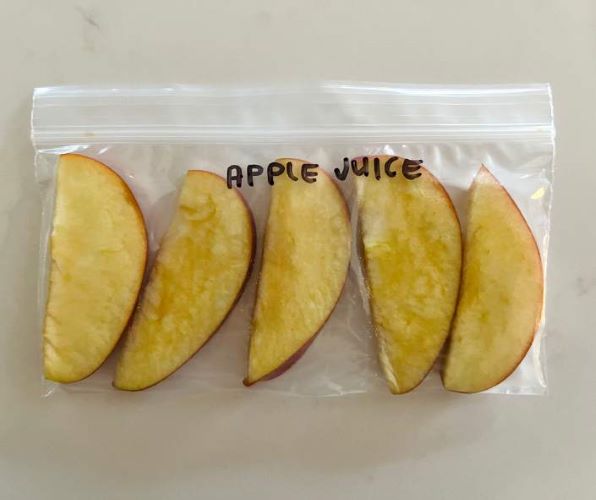
When I worked in school food service we would fly through fresh apple slices at lunch time. To help keep apples from browning, we would toss the apple slices in diluted 100% apple juice because it was something we had readily available in the kitchen. This seemed to do the trick!
Like many fruit-flavored beverages, 100% apple juice often contains citric acid to help with the tangy flavor and preserve the color.
Apple juice is great not only because it’s something you may already have in your fridge, but you won’t get any weird flavors since the juice already tastes like apples.
Ingredients: ¼ cup 100% apple juice + 1 cup water
Soak time: 3 minutes
Results: helped minimize browning, but some browning did occur
8. Soak in Honey Water
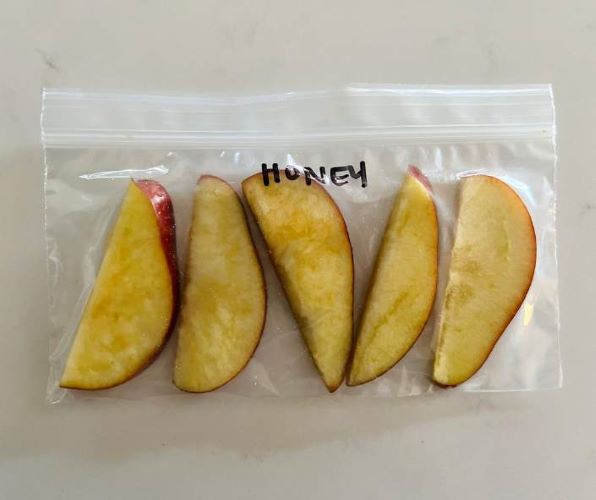
Honey contains several compounds that help minimize oxidation. However, this method still resulted in quite a bit of browning and I’d rather save my honey for my yogurt or tea.
Ingredients: 2 Tbsp honey + 1 cup water
Soak time: 3 minutes
Results: similar browning to plain apples
9. Store in Airtight Container
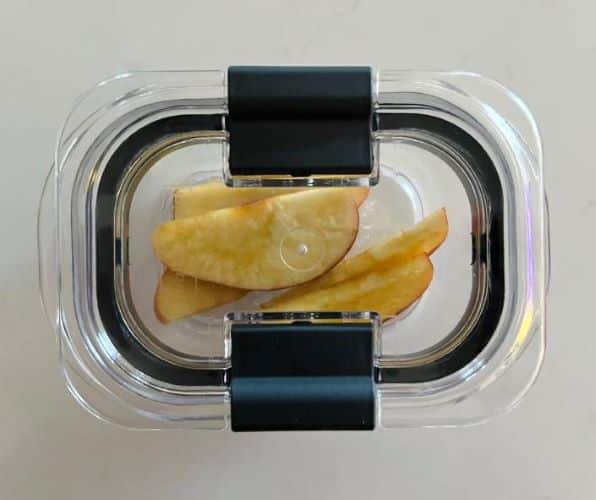
You would think that putting your fresh apple slices in an airtight container would keep apples from browning since you’re limiting exposure to air, but it only minimally decreases the browning.
Ingredients: none – Rubbermaid airtight container
Soak time: none
Results: minimal difference compared to plain apple slices
10. Citric Acid

As noted in many of the ingredients used above to keep apples from browning, citric acid is commonly used to prevent this unwanted feature in apples. Citric acid helps prevent apples from browning by lowering the pH and inhibiting the oxidation process.
Citric acid is naturally found in citrus fruit, specifically lemons and limes and is used as a flavoring and preserving agent. Because of its high demand as the most common food additive in the world, most citric acid that is used in products is commercially manufactured.
The use of manufactured citric acid is generally recognized as safe (GRAS) per the FDA.
While citric acid resulted in the least amount of browning, the apples had an extremely sour taste and wouldn’t be one of my top choices to keep apples from browning.
Ingredients: ½ tsp citric acid
Soak time: Sprinkle with citric acid and let sit for3 minutes then rinse
Results: minimal browning, but extremely sour flavor
Cutting Apples for Picky Eaters
Now that you’ve determined which method you’ll use to keep apples from browning, how you slice them is the next challenge for you with your picky eater.
Slicing them up will surely suffice, but there are a few easy ways to offer apples to your picky eater that will surely make them gobble up an entire apple.
- Mini cookie cutters
- Apple “fries” using a crinkle cutter
- Match sticks
- Monster apple slices
By simply changing the way you cut apples for your picky eater you’re helping them get used to variety!
The Best Way to Keep Apples from Browning
Common ways to keep apples from browning include salt, lemon juice, lemon-lime soda, 100% apple juice, honey, and citric acid. You can also skip the science project and simply enjoy a whole apple or naturally non-browning Opal apples.
The goal to prevent freshly sliced apples from browning is to minimize or prevent oxidation (enzymatic browning) from occurring either by reversing the oxidation process, changing the pH, or exposing the apple slices to low or high heat.
So what’s really the best way to keep apples from browning? Using naturally non-browning Opal apples is by far the easiest way since all other ways eventually lead to some form of browning. Grab some Opal apples here, but in the meantime the next best option would be diluted salt water or diluted 100% apple juice.

